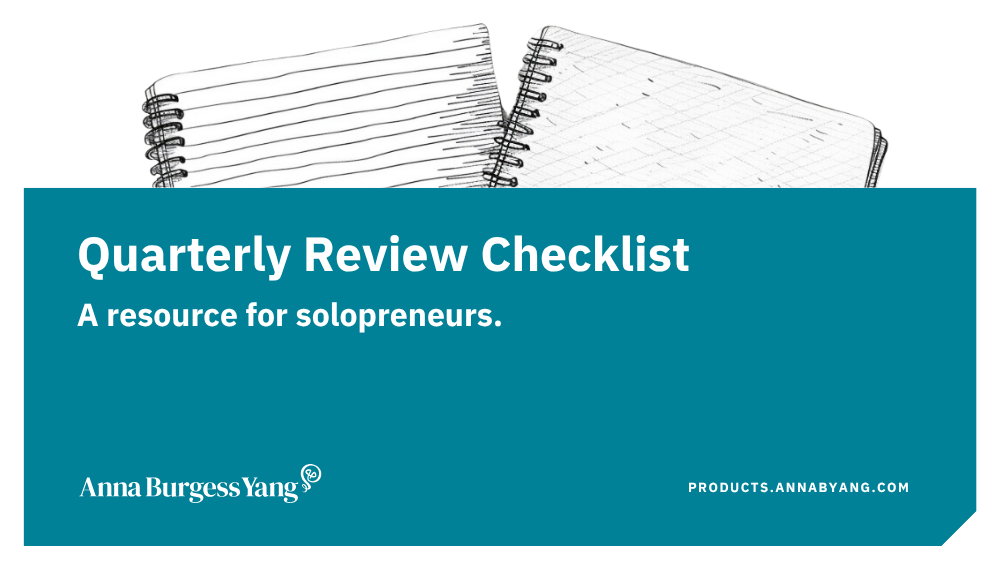How to Stay Grounded When Business Is Hard
Keep calm and carry on.

Running a solo business is always full of ups and downs, but the past year has been a special kind of hell for many freelancers. The economy has been unpredictable, budgets have tightened, and costs are going up on everything. Even experienced solopreneurs are feeling the squeeze.
When work slows down, panic can creep in. You start second-guessing yourself. You consider lowering your prices or chasing opportunities that aren't the best fit. That anxious voice, saying, "I just need something"? It's loud and very valid.
But there are ways to keep moving forward, even when business feels shaky. You also need to trust yourself enough to determine the difference between a rough patch and actual changes that may require you to pivot your business.
Keep calm and don't get desperate
When things don't go as planned, desperation is a natural reaction. Desperation is rooted in fear, scarcity, and our need for control. In your head, you start to run through "just in case" scenarios.
I have a budget for my freelance writing business. When things start to feel tight, I'll look at my budget. Over and over. I'll start planning different scenarios, like, "What if my income is only XYZ this month?" I did a lot of this after I had to temporarily shut down my business this year while dealing with a medical crisis. Planning is good, but fixating isn't.
Desperation rarely leads to good decisions. Instead, you need to pause and remember: this is part of the cycle. All businesses — even thriving ones! even huge corporations! — have slow seasons. Staying calm helps you make the right moves instead of desperate moves.
A slow period doesn't mean you've failed. But it is an opportunity to assess what's working (and, maybe, what isn't).
Practical strategies to avoid frantic decisions
When things feel uncertain, you need structure. Structure keeps you from spiraling.
If you follow these steps, you'll feel more in control. Plus, you'll have some concrete information to work with as you plan for what comes next.
1. Review your financials
Sometimes, things aren't as bad as they seem. My work always gets slow at the end of the year, well into January. My clients take time off for the holidays. If I compare my business's revenue year-over-year, January is always the lowest-earning month.
Yet, even knowing this, I start to panic in December when I don't have any work lined up. Then I look at my financial statements and remember, "This is a pattern that occurs every year."
Look at your historical earnings. Don't compare one month to the previous month; look at the same month in the prior year. That's often a more accurate picture for many businesses since there are often seasonal fluctuations in work.
If you are experiencing an abnormal dip, then take a look at your savings and recurring expenses. Do the math before instead of letting your emotions take over. Can you reduce your expenses? Can you pull money from savings? How long can you float yourself before you're really in financial trouble?
Knowing your numbers will help you figure out how urgent your financial situation is.
2. Reach out to past clients
Strategies to market yourself (like LinkedIn) can take a long time before they're effective. Even if you land a new prospective client, it can take some time to get an agreement in place, start work, and get paid.
If you truly need more work, start with the people who already trust you. Send a friendly check-in email. Let the client know how much you enjoyed working with them, and let them know you're available. You can also let them know of any additional services you're now offering.
Often a single reconnection can get you the work you need — and far faster than cold pitching ever could.
3. Focus on another area of your business
Slow times give us much-needed space to work on other parts of our businesses. If your client work is light, you can do work that typically falls to the back burner when you're busy. Take on a project like:
- Updating your portfolio
- Refreshing your website
- Creating and batch-scheduling social posts
- Building a new lead magnet
When you're productive, you'll feel like you're getting something done. You're doing something necessary that benefits your business. It takes the focus off your lack of paying work.

4. Operate leanly
One way you can reduce your panicked feeling is by auditing your expenses.
I don't recommend this as an earlier step (like when you review your financials), because sometimes it isn't necessary. Cutting back on recurring expenses when you're going through a tight time in your business can create more work for you.
For example, let's say you pay for a tool every month that costs you $25, but saves you hours of time. However, it's not critical. So you could cancel and save $25, but now you're spending more time on busywork in your business. Is that a worthwhile tradeoff? It depends.
But you might also take the opportunity to see if your business expenses are too bloated. Can you consolidate tools? Are there any that you aren't using much?
If you operate leanly, you can reduce the amount you have to earn per month to support yourself and your business. This can reduce your overall stress when business is slow.
5. Try to bring in some extra cash
To fill an immediate gap in your income, think about ways you could earn some extra money. Maybe you can create a quick, low-priced service that you can offer to existing clients. Or, if you have an email list or online audience, you could create a paid digital product or webinar offering.
Keep in mind that if you create something that consistently brings in revenue — even a small amount — it will lessen the stress during your slow months.
Determine your tipping point
Not every slow month is a crisis. But you should define what “desperate” actually means for you.
Is it when you have to dip into savings? When your monthly revenue falls below a certain number? When you can’t pay yourself consistently?
Knowing your "tipping point" helps you make proactive business decisions. If you know that dipping below $X revenue per month makes you nervous, plan what your next move would be before you get there. Often, this doesn't happen overnight, but after several months of reduced income.
Even if you reach that tipping point, you’re still the CEO of your one-person business. Your job is to steer the ship — not panic and abandon it.
Recognize changes in market conditions
There's a notable exception to the "don't panic" advice: when the market has drastically changed and your business no longer makes sense.
Industries experience major shifts all the time. The COVID-19 pandemic changed in-person events, for example. Automation and AI have reduced the need for a lot of repetitive, redundant work.
You have to differentiate between "this is just a slow season in my business" to "the market has changed, and my business needs to adapt."
Don't let yourself overreact
A solo business is cyclical, just like any business. You will always be slow seasons and underwhelming results. But how you respond to those moments determines whether you build a sustainable business —or burn yourself out trying to frantically "fix" things.
When things feel like they’re falling apart, don’t rush into decisions. Refocus. Move forward with intention.
Because panic won't pay your bills. But the right business strategy will.

Need to review the health of your business?
Check out my quarterly planning checklist for solopreneurs.






